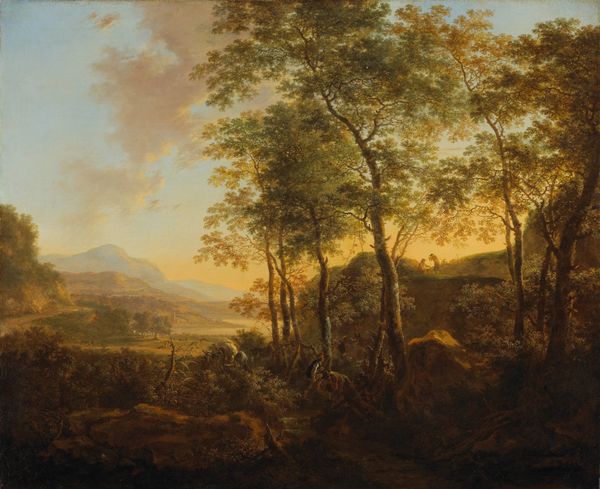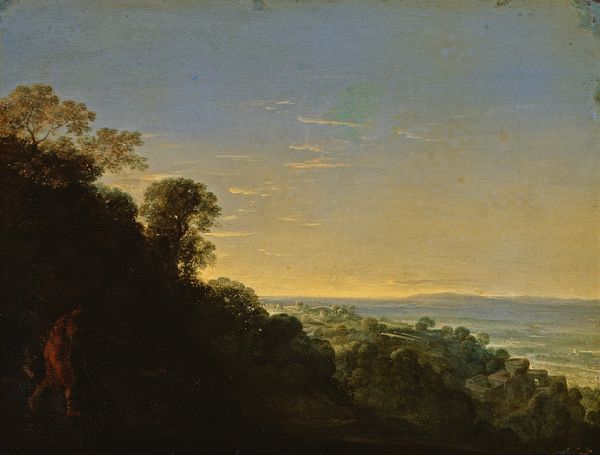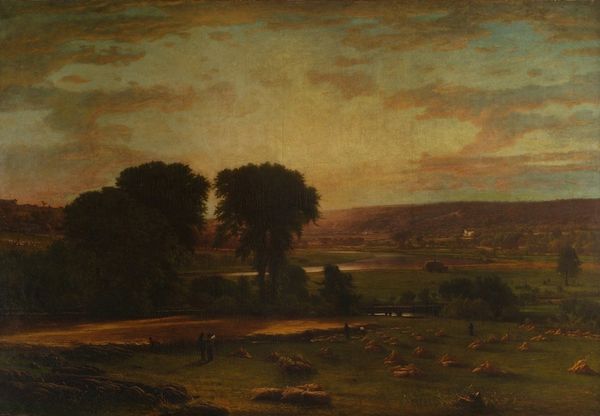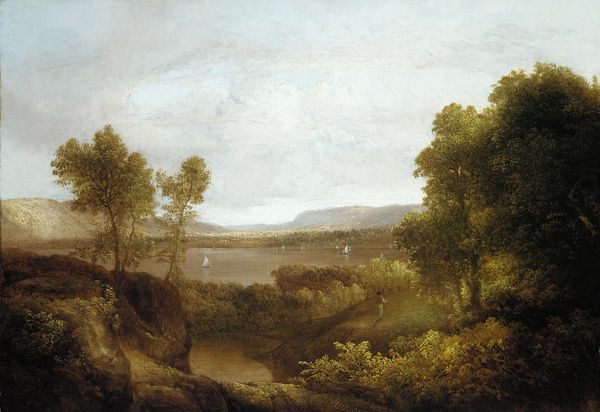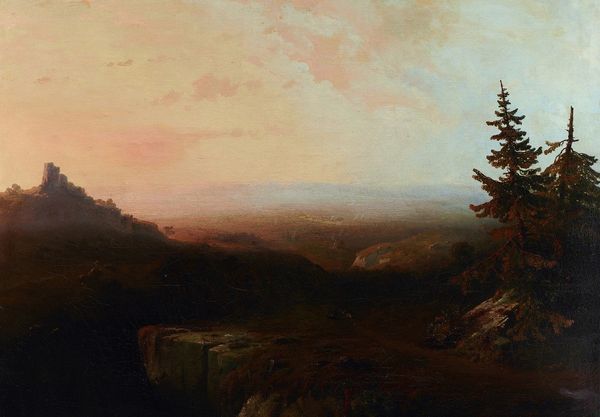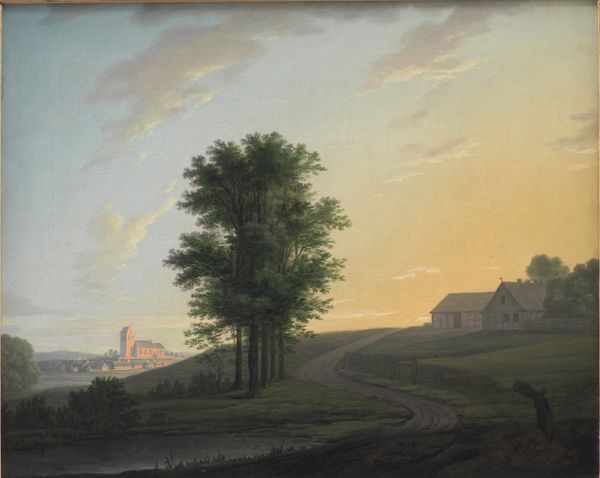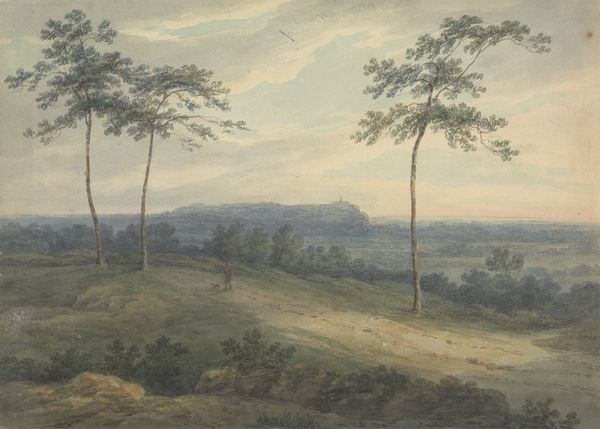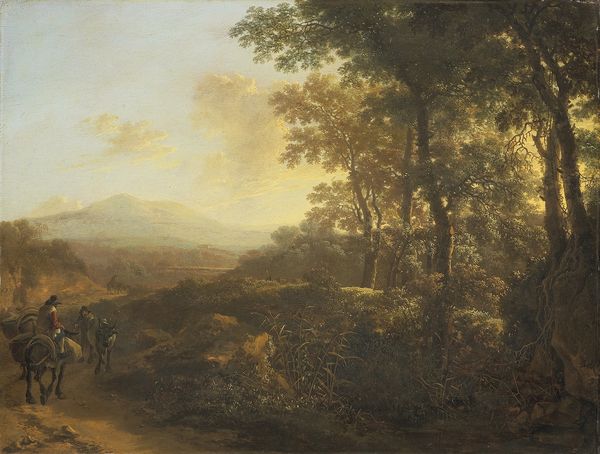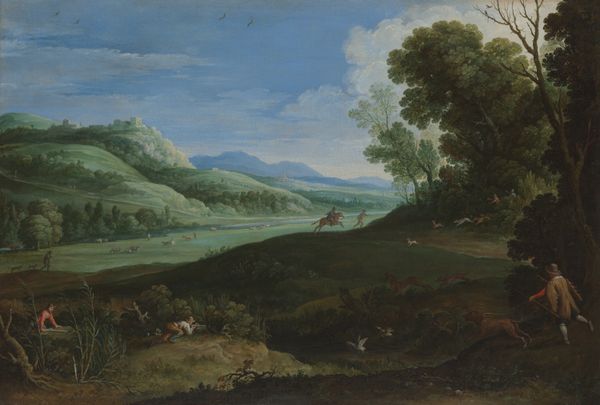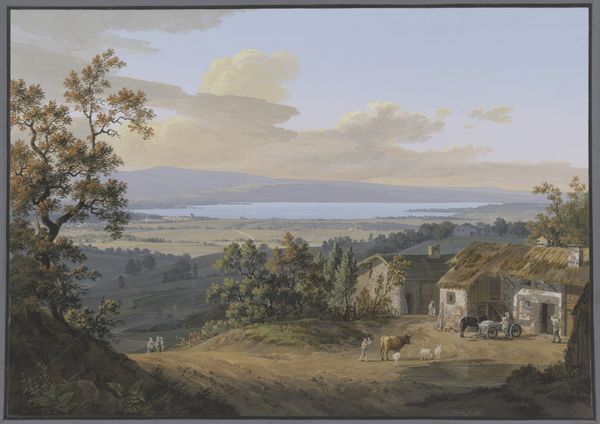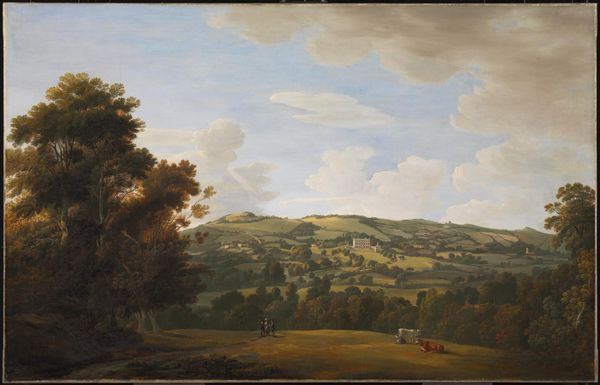
plein-air, oil-paint, canvas
#
plein-air
#
oil-paint
#
landscape
#
oil painting
#
canvas
#
romanticism
Dimensions: 62 cm (height) x 83.5 cm (width) (Netto)
Curator: Heinrich Grosch's "Sjællandsk landskab, aften," created around 1810, is currently held at the Statens Museum for Kunst. It's an oil-on-canvas painting, demonstrative of plein-air techniques. Editor: First thought? Tranquil. Almost overwhelmingly so. The golden light feels incredibly pervasive. I get this nostalgic pull toward a simpler time. It's like peering into a half-remembered dream. Curator: Considering its production, the portability of oil paints facilitated landscape painting directly from observation, aligning with the period's growing emphasis on firsthand engagement with the natural world. Sjælland, the Danish island depicted, offered rich subject matter for artists during the Romantic era. Editor: It’s intriguing how the almost hazy light washes over everything, softening the edges of the scene, and note the people travelling on a humble carriage. Yet it all looks remarkably modern; what sort of labor went into making something that still manages to feel so relevant today? Curator: Indeed. Grosch's painting exists not in isolation but as a product of very specific materials and social circumstances. The pigments used, the source of the canvas, the economic systems that supported both artist and patron – all factors shaping the work's very existence and our continued engagement with it. Moreover, consider the labor involved: from cultivating flax for the canvas to the extraction and processing of the oil paints. Editor: Absolutely! And it makes me think about the choices the artist had to make to use these materials. The decision to apply paint thinly versus thickly... the deliberate choice of color palette. It seems so intentional, carefully measured against the broader trends in art but filtered through the artist’s own vision. Curator: It serves to remember that artistic choices were deeply interwoven with the prevailing socioeconomic fabric. Even this tranquil, idealized scene subtly reflects the class structures and power dynamics inherent in early 19th-century Danish society. It really calls into question what labor really means. Editor: Ultimately, though, even with those heavy contextual layers, what endures for me is the emotion evoked: that potent blend of yearning and peace only nature can truly deliver. Curator: I appreciate your willingness to allow for more complexity to it than simply an emotion. It really brings attention to how materials can impact artistic interpretation, opening avenues to more thoroughly connect social context with human expression.
Comments
No comments
Be the first to comment and join the conversation on the ultimate creative platform.
